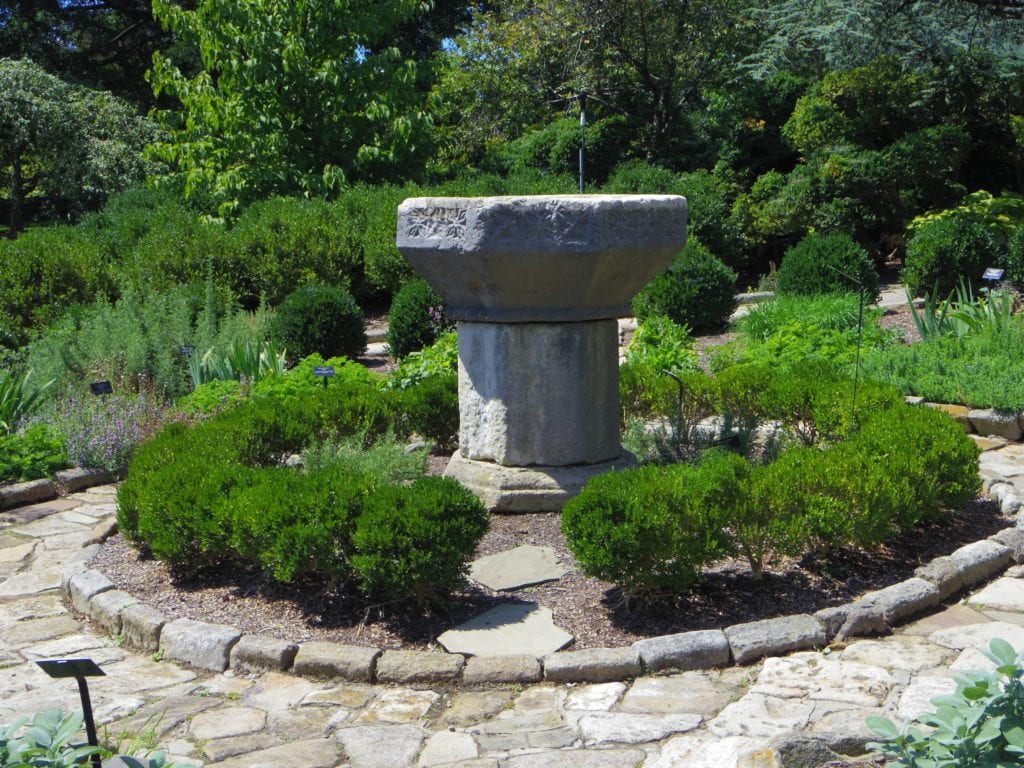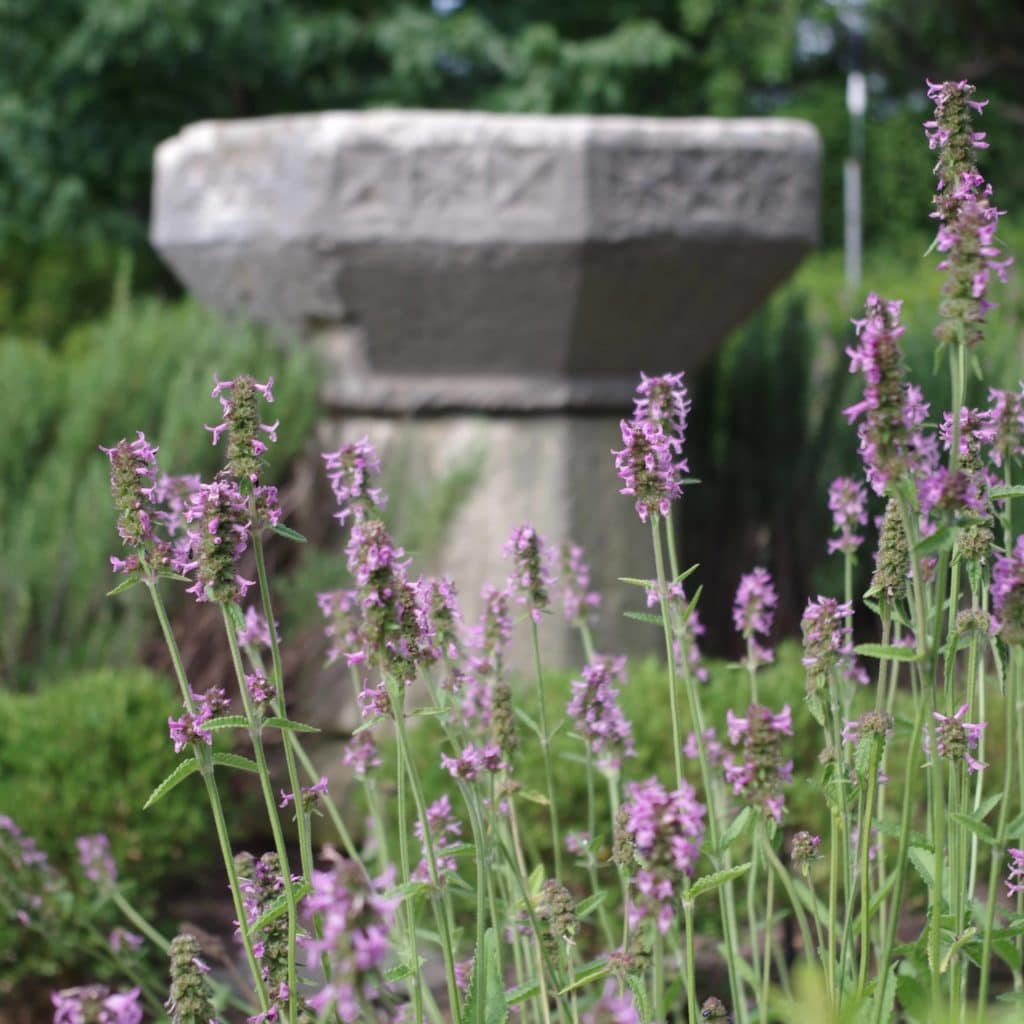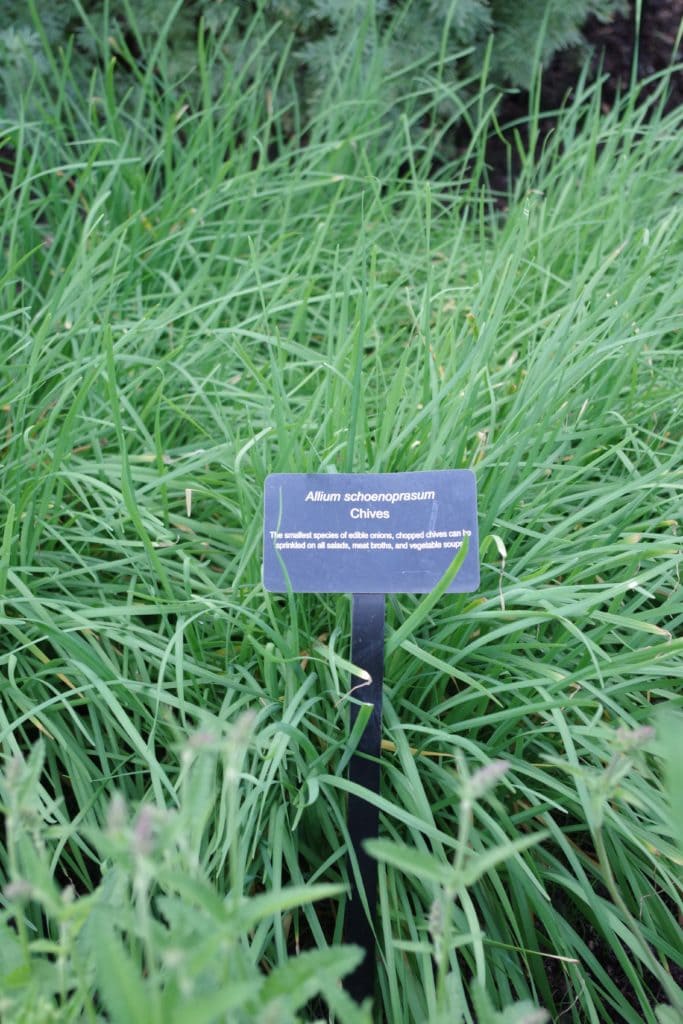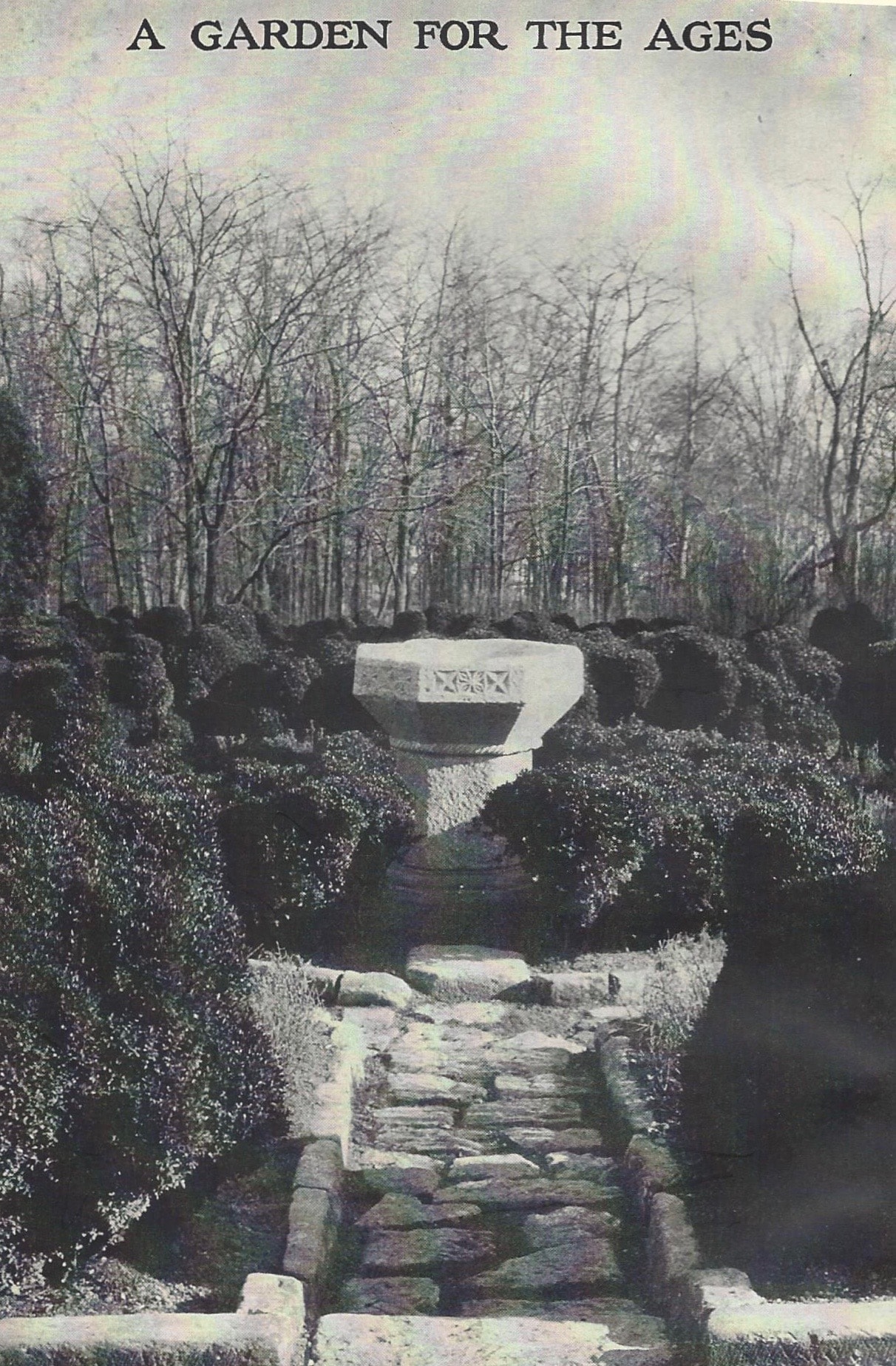June 5, 2018
 In the Bishop’s Garden, west of the rose garden and northeast of Shadow House is the Hortulus – or “diminutive garden”.
In the Bishop’s Garden, west of the rose garden and northeast of Shadow House is the Hortulus – or “diminutive garden”.
Bordered by boxwood, this little garden features geometric beds planted with monastic kitchen and infirmary and herbs used in the 9th century. Documents from the time of Charlemagne were used as the primary source for this planting. Today, the Hortulus in the Bishop’s Garden includes mint, sages, fennel, rosemary and other fragrant flowery herbs.

The focal point of the Hortulus is the Carolingian Font – surrounded by rosemary.
The font is attributed the ninth century AD and is reported to have come from the Abbey of St. Julie in the Aisne. The top is marble and the pedestal is of Caen limestone. It was an acquisition from the collection of George Grey Barnard and donated to the garden in 1927 by Mrs. Henry Hudson Barton of Philadelphia – in memory of her husband.

The overall inspiration for the Bishop’s Garden is a 14th century monastic garden, in keeping with the gothic design of the Cathedral.
However, this small garden room, the Hortulus, is anchored firmly in the 9th century. In his poem entitled “Hortulus”, written in 849 A. D., Abbot Walahfrid Strabo describes how some of the plants included in this little garden would have been used during his time. You will find excerpts from this poem on some of the plant labels in the Hortulus.The Emperor Charlemagne’s list of plants (812 AD) and the planting plan for the Abby of St. Gall in Switzerland (820 AD) also served as sources for plant material in the Hortulus.



